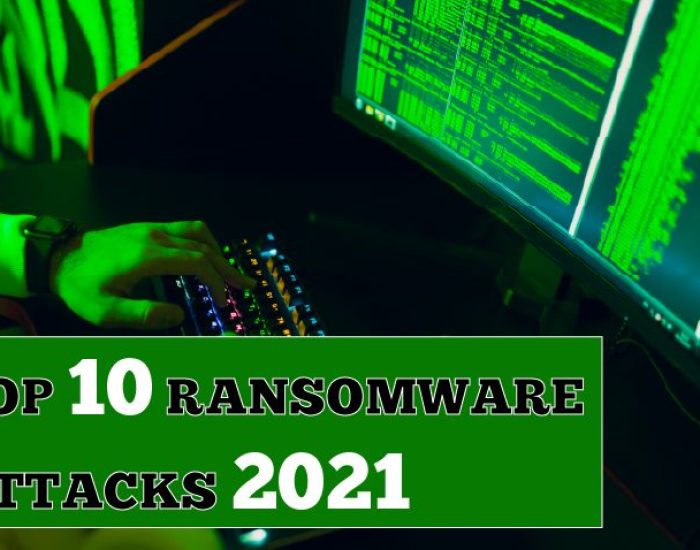A Quick Guide to Proactive Cybersecurity Measures: How to Keep Yourself Safe From Hackers
Cybersecurity has become an important topic in today’s society. In the digital age, cybersecurity is critical to protecting data and intellectual property from unauthorized access, modification, disclosure, or destruction. However, cyber threats continue to grow in number and sophistication. A recent study by Intel Security found that 66% of businesses experienced at least one cyberattack during the year 2021. Cybersecurity for small businesses is important because they are often easy targets for cybercriminals who seek to steal sensitive data or disrupt operations, leading to significant financial losses and reputational damage. As more organizations are confronted with this reality, many have also begun to realize their current security measures aren’t enough.
In this blog post, we will unpack some proactive cybersecurity measures you can take to protect your organization’s data and reduce your risk of being a victim of cybercrime.
What is Proactive Cybersecurity?
Proactive cybersecurity is an organization’s effort to protect its data and software systems from threats before they happen. A proactive approach to cybersecurity can help organizations to stay ahead of emerging threats by using data-driven insights, continuous monitoring, and risk assessments. There are many ways to implement proactive cybersecurity measures.
Focusing on cybersecurity policies and procedures is a great place to start. You can also consider implementing tools that automate security tasks, such as Endpoint Detection and Response (EDR).
Cyber-Threat Analysis
When adopting proactive cybersecurity measures, there are various risks your company can face. To determine your top cybersecurity risks and vulnerabilities, you must do a thorough threat analysis. You’ll want to know how many cyber attacks happen daily based on your sector, geography, and relevant exposure. You must be aware of your defenses’ weak and strong points. Additionally, you must have a specific cybersecurity attack and defensive strategy.
Cybersecurity threats can come from various sources, including human error, natural disasters, hardware failures, malicious software, unsecured networks, and more. Before implementing proactive cybersecurity measures, you should analyze your organization’s cyber threats. You can use cyber threat modeling to identify the most significant risks to your organization. This process maps the threats to your organization and involves breaking down the organization’s infrastructure into components and mapping the threats against them.
What You Can Learn from Cyber Threat Analysis Are:
Assets: System administrators and cybersecurity experts should identify and safeguard the most critical assets in your organization. This includes sensitive data, intellectual property, and critical systems.
Attack vectors: Attacks can come from a variety of sources. The most common attack vectors include infected websites, malicious code, unsecured networks, and social engineering tactics.
Controls: You can use threat modeling to identify the controls and protect your assets. This will help you determine where additional controls might be needed.
Educate Your Team
One important proactive cybersecurity measure is to ensure that your team understands the potential threats facing your organization and how they can reduce their risk of being attacked. This can be done through regular cybersecurity training that educates employees on best practices and how they can contribute to better cybersecurity. It can also help them learn how to protect themselves and their colleagues.
 Threat Hunting
Threat Hunting
Cyber threat hunting continuously monitors networks and systems to identify malicious activity and threats in real-time. During threat hunting, you should also look for information that could be useful in tracking down and identifying potential attackers. This will allow you to respond to threats and attacks quickly. It could be an Advanced Persistent Threat (APT), a sophisticated cyber-attack, or even an insider threat. Regardless of the potential attack, the threat-hunting process can help you identify the nature of the threat and take the appropriate action to mitigate it before any real impacts on your business.
Penetration Testing
Penetration testing is testing your cybersecurity measures by breaking into your own systems. You can also refer to this as ethical hacking or red teaming. Once you have identified a potential threat, you can use penetration testing to simulate the attack and determine the outcome of this threat. This will help you understand the threat’s risk and choose the best way to respond to it. A vulnerability assessment is also an essential tool to use during a penetration test. It will help you to identify areas of your network where you are at risk of being attacked. It is important to remember that penetration testing is only a simulation and will help your business down the road.
Get Help
The cyber threats facing organizations today are constantly growing. Proactive cybersecurity measures must be implemented to protect your organization’s data and intellectual property. This includes cyber threat analysis, educating your team, threat hunting, and penetration testing.
Now, one final proactive cybersecurity measure we recommend is to get help. Even well-resourced organizations often struggle to fully protect themselves from cyber threats. Therefore, engaging with cybersecurity experts who can help your organization improve its cybersecurity posture is important. Working with our team at Protected Harbor is also essential as it provides an unbiased third-party perspective that can help you to identify vulnerabilities you may be unaware of.
Calling in the experts is the most straightforward preventative cybersecurity strategy for if this all sounds a bit overwhelming. You and your IT team may feel less pressure if you enlist a group of professionals to assist at each stage, and your organization may be better protected.
Let our staff of cybersecurity professionals start taking preventative steps to secure your company. Get in touch with Protected Harbor today to learn more about our Threat Monitoring, Detection, & Response services.






